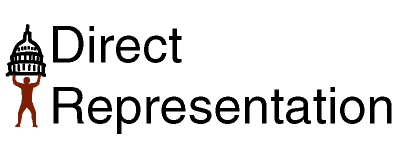

|
|
| District Plurality |
 |
Instant Runoff Voting |
 |
Proportional Representation |
 |
Direct Representation |
||
 |
IRV for chief executives only |
 |
PR for councils, boards only |
|||||
IRV is most appropriate for inherently single-winner elections: presidents, governors, mayors, and other executives. It is not appropriate for use in multi-winner races because it excludes political minorities from participation in government. It is still better than district plurality voting, which can exclude political majorities, but other systems work better for multi-winner races.
PR is most appropriate for councils and boards with 2-8 members, and for choosing committees within a legislature. For larger bodies, Direct Representation works better. PR still leaves most power in the hands of parties and contributors, does not provide a clear accountability link between voters and legislators, and does not give everyone's vote an incremental effect. However, it is vastly better than legislative elections based on single-member districts.
A proposed variation on PR called interactive representation does not transfer excess votes, but instead gives each representative voting power proportional to their number of votes. This system would be a good alternative to DR if it were necessary to have districts that elect a small number of members. However, it still suffers from the drawbacks associated with limiting voters' choice and with making collective decisions. These drawbacks are serious enough to warrant elimination of districts and use of Direct Representation.
|